Culture
Cultural and historical pearls of Tidan
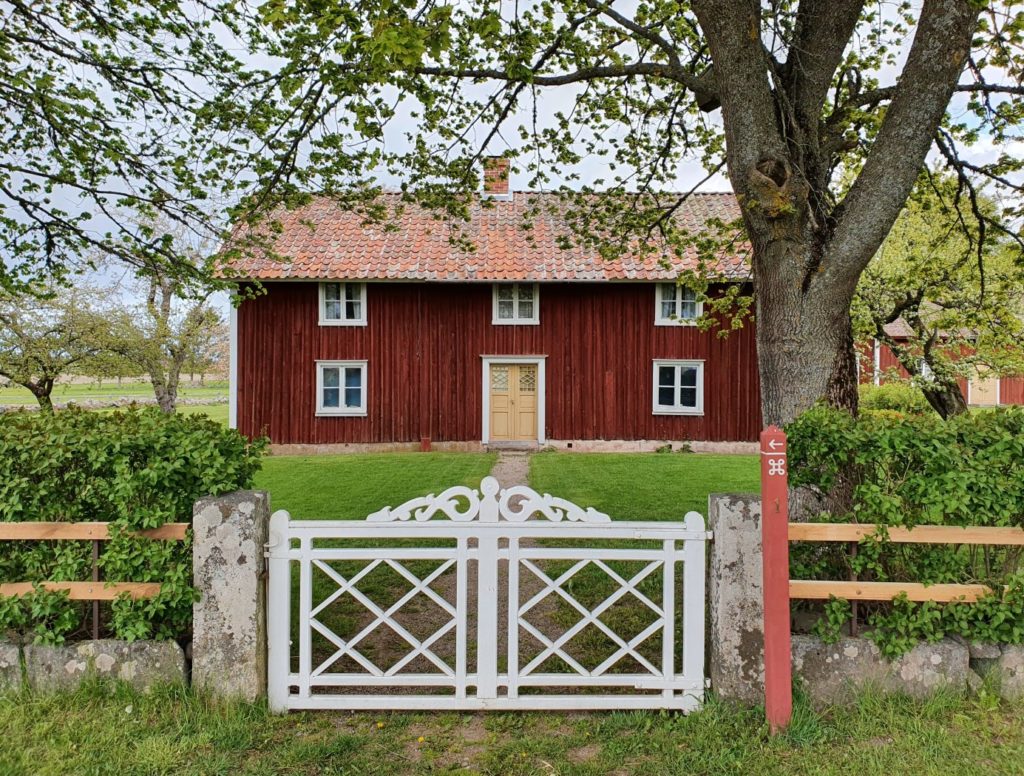
Feb
The community of Tidan in western Sweden, with just under a thousand inhabitants, is perhaps unfamiliar to most people. Yet the surrounding countryside has been inhabited for thousands of years and contains several fine visitor attractions for anyone with an interest in cultural history. Below is a suggestion for a day trip to the area's main attractions.
A good starting point for a trip in the surroundings of Tidan is the well-preserved 19th-century farm Vallby Sörgården. The surrounding land is rich in ancient monuments and the farm has been classified as a cultural reserve since 2008.
The name Vallby, which means "place where animals graze", indicates that the place has long been used for animal husbandry. The first time Vallby Sörgården is mentioned in written sources is in a tax list from the 16th century. From the end of the 18th century, the farm was passed down from one family to the next. The last owner died without heirs in 1996, and the farm was taken over by the local community associations in the area. Today it is managed by a special association set up to look after it.
The farm includes a total of eight buildings, which are very well preserved both inside and out. The furnishings and tools largely date back a hundred years or more. The manor house dates from the early 19th century and is flanked by two wings. At the rear is an exceptional cottage, where the older generation moved when the younger took over. In addition there is a barn, sheepfold, barn and earth cellar. A short distance from the dwellings is a 19th-century blacksmith's shop, which is partly buried in an Iron Age burial mound.
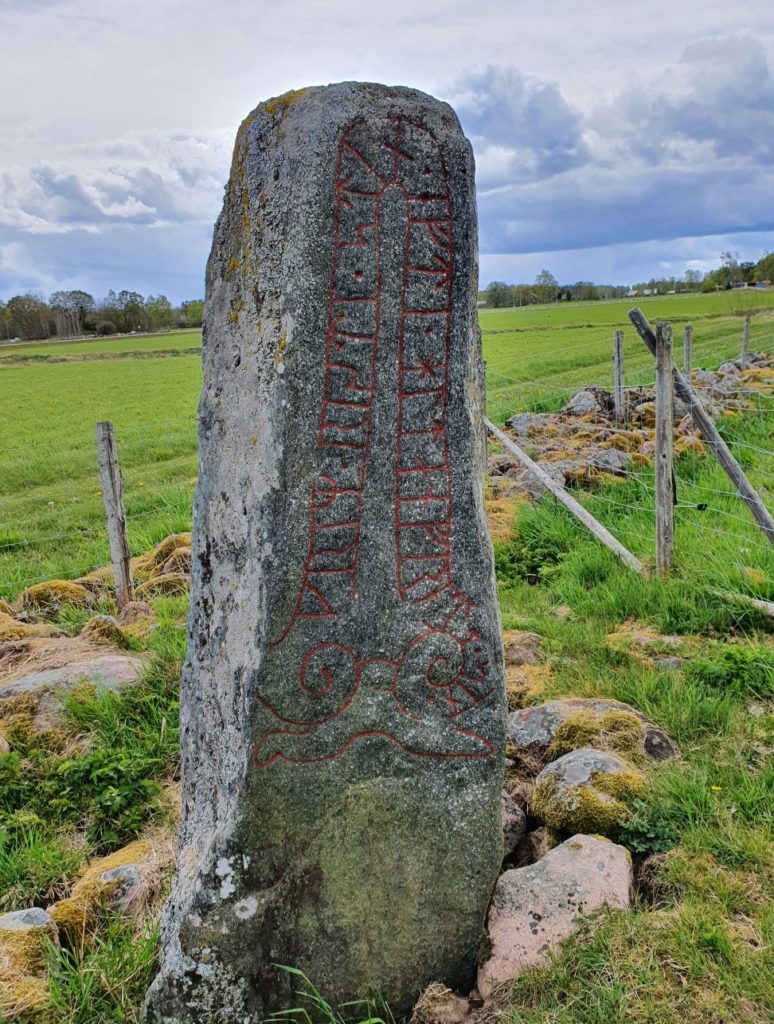
Those who wish can follow a walking trail along the old road to look at stone farms and pastures. The walk also passes through the Jämmerkullen burial ground, which contains various types of graves from the early Iron Age. There is also Grim's rune stone, which was carved about a thousand years ago. The text reads:
krim * risti * stin * efti * hltan * freta * sin
Today we would say "Grim raised the stone after Halvdan, his kinsman".
With its simple text loop, the rune stone shows the similarities between the language spoken in the Viking Age and modern Swedish.
During the summer, Vallby Sörgården is open on Sundays to showcase activities related to old-time farming and farm life. Members of the association grow old crops, beat with scythes and look after grazing animals. They also offer guided tours of the intact interiors of the houses and those who wish can buy coffee in the cultural reserve's canteen.
From Vallby Sörgården, a winding country road leads to Flistad Church, whose surroundings bear traces of centuries of human activity. The church was given its present form in the 18th century, but the oldest parts date from the early Middle Ages. The beautiful baptismal font was made by the stonemason Master Andreas, who was active in Västergötland in the latter half of the 12th century. The main attraction for many church visitors, however, is probably the decorations on the ceiling. In the transition between walls and ceiling runs a text strip with the Lord's Prayer, illustrated with magnificent paintings by the 18th-century artist Lars Hasselblom.
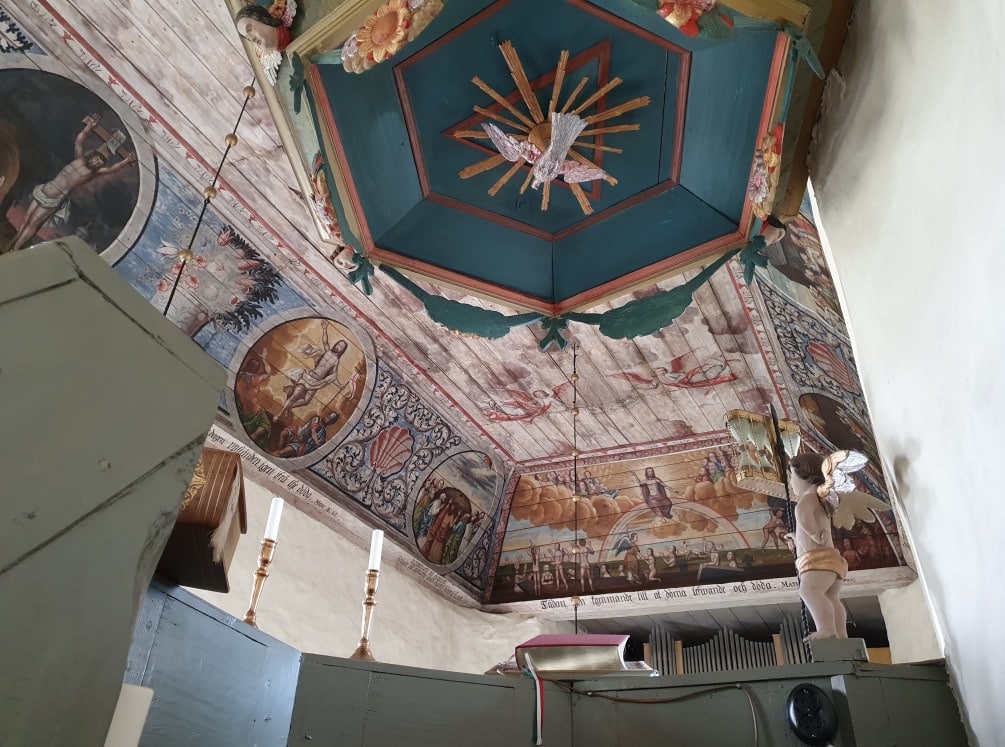
The cemetery outside is dominated by King Rane's mound, which seems to watch over the more modern tombs. The as yet unexcavated burial mound probably dates from the late Iron Age and would have been the resting place of a great man or woman. However, we do not know whether it is really the mythical King Rane who rests there.
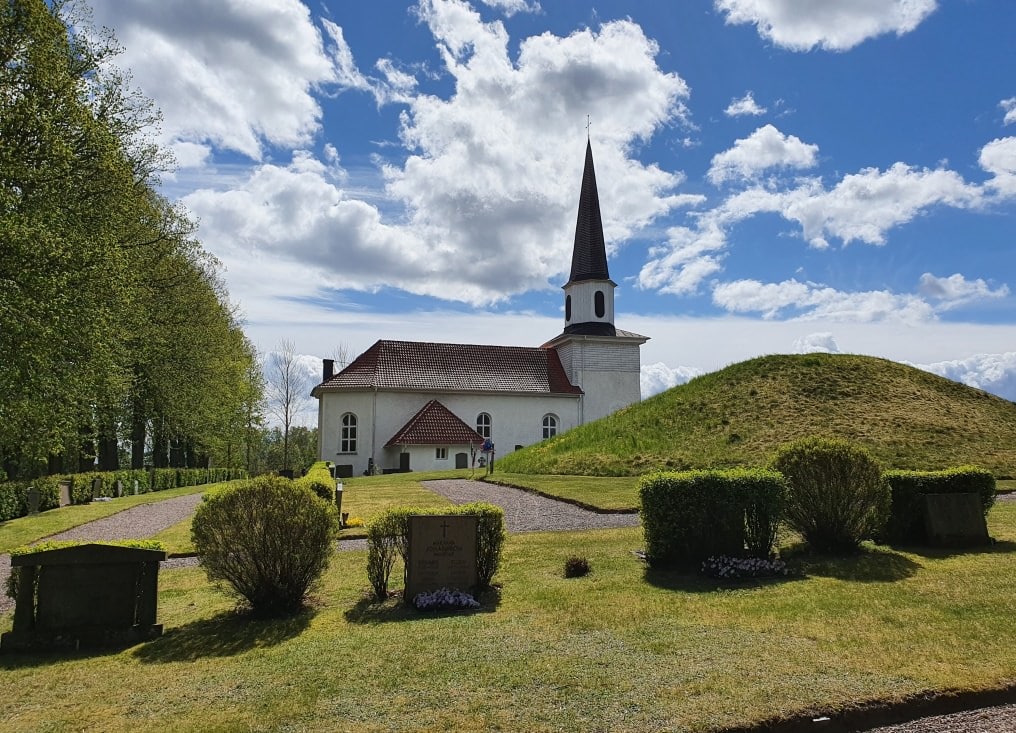
Next to the burial mound there is another evidence from the Iron Age in the form of a remarkable rune stone. The message carved into it is very cryptic. Some of the runes are upside down and some have been merged to form a single sign. In addition, a mixture of runes from different runic alphabets is used. A couple of the interpretations read "Aan raised the stone after Lande" and "take heed of the dead, destroyer" respectively. However, some say that the inscription is so strange that it must have been made by a bungler who did not even know how to write.
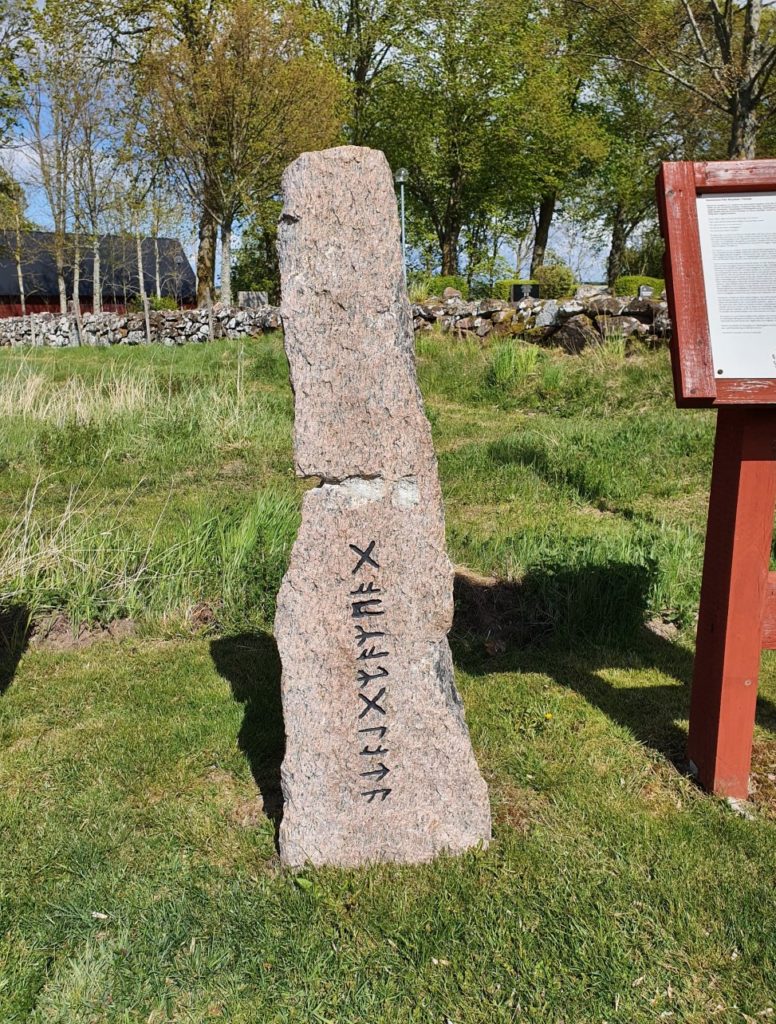
The stone that stands on the site today is a copy, while the original is in the Historical Museum.
A few kilometres from Flistad is the Askeberga ship settlement, which is the second largest in Sweden, after the Ales stones in Skåne. 24 giant boulders, each weighing tens of tonnes, form a 53-metre-long ship formation atop a platform of earth.
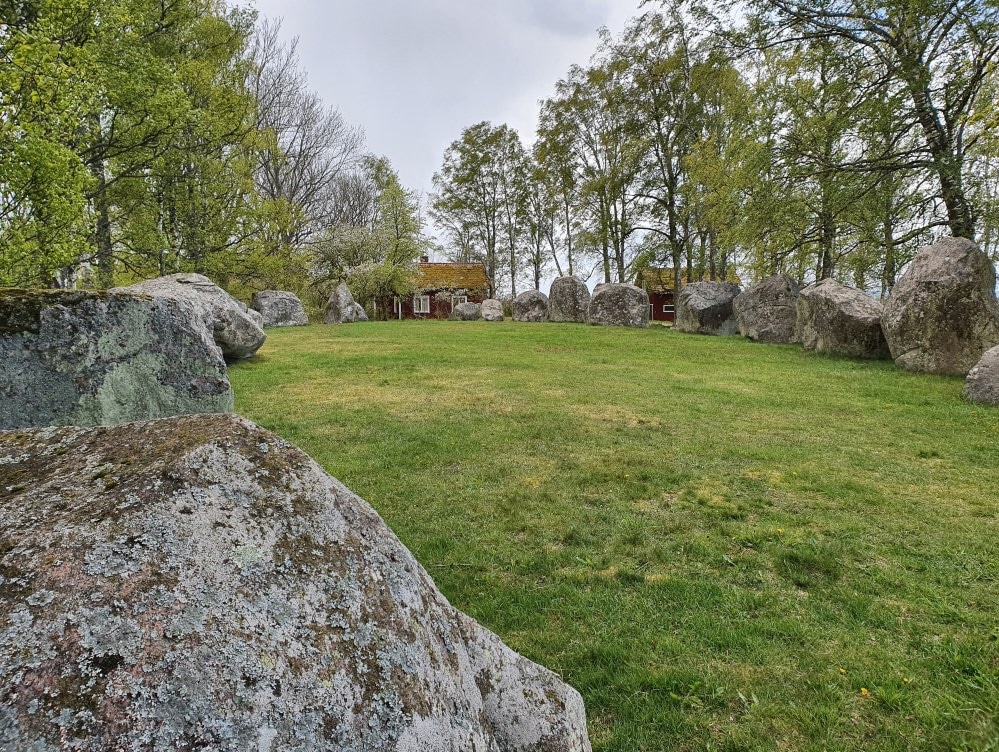
The shipyard is believed to have been built in the 6th century, but how it was built is a real mystery.
A short drive from the shipyard leads to Vaholm Farm, which has centuries of history. The impressive farm is a private residence and does not receive visitors, but just outside is the unique wooden truss bridge, which attracts curious tourists. The bridge, probably built in the 19th century, is said to be the only covered bridge in Sweden. Beautifully situated in the plains, it connects the two sides of the Tidan River. Carved into the wood are declarations of love of various ages. According to local legend, the bridge house is haunted, so that visitors to the bridge at night can hear the screams of children who have drowned in the river.
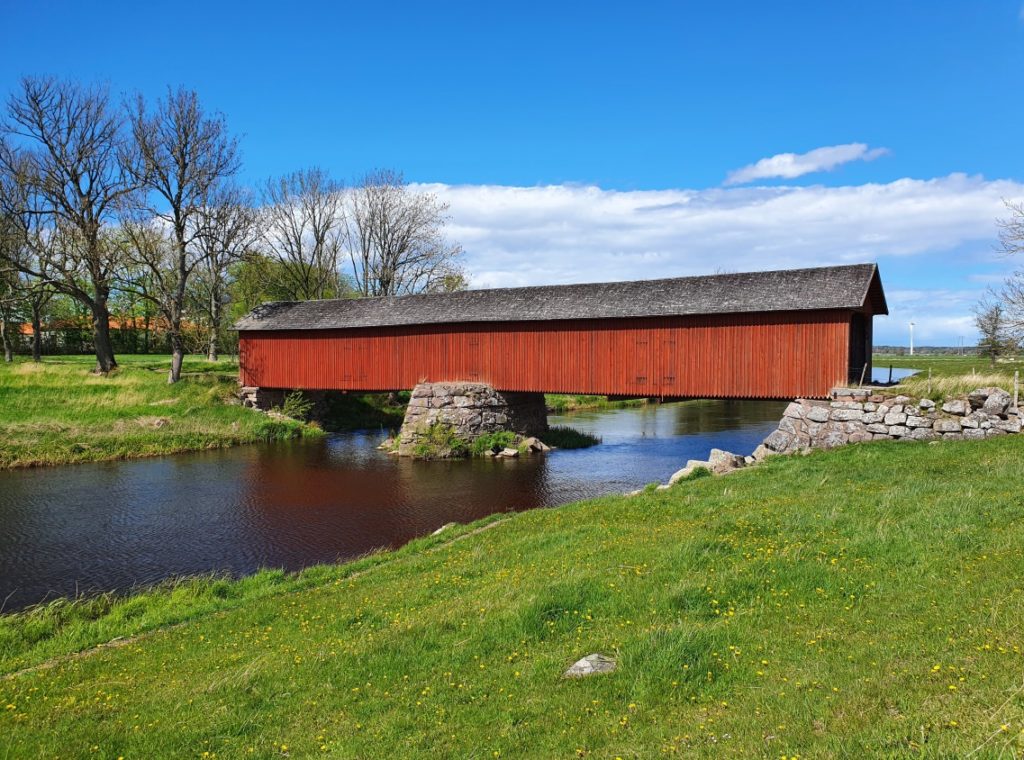
For those who drive past Tidan, there are good reasons to spend some extra time discovering the area's cultural and historical remains. The variety of sights makes it an exciting place to explore for different interests and ages. In spring and summer, open fields, lush countryside and charming wooden houses add to the experience.
Read more:
https://turistmal.se/?index=item&id=7109
https://www.vastsverige.com/skovde/produkter/vaholms-brohus/
https://sv.wikipedia.org/wiki/Flistads_kyrka,_V%C3%A4sterg%C3%B6tland
https://sv.wikipedia.org/wiki/Kung_Rane
Subscribe to YouTube:
If you appreciate Allmogens independent work to portray our fine Swedish history and Nordic culture, you are welcome to buy something nice in the shop or support us with a voluntary donation. Thank you in advance!
Support Allmogens via Swish: 123 258 97 29
Support Allmogens by becoming a member
Support Allmogens in your will
Historical maps of Västergötland
Our wall maps are carefully restored, centuries-old maps that are reprinted in Ångermanland on matte, age-resistant, museum-quality premium paper. 1% of the proceeds go directly back to cultural heritage!

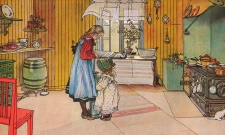
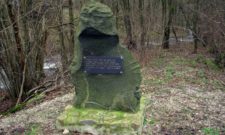
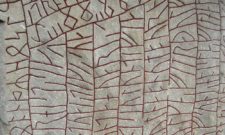
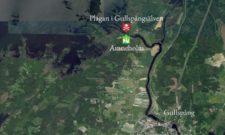
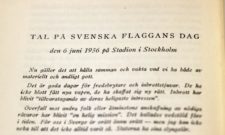
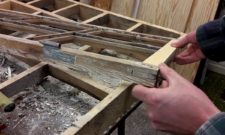


The text and the nice pictures about Tidan are especially welcome now that old people like me don't dare to go out. Very interesting reading, even for an old West Goat.
Thank you, Hans, for the words of encouragement! I will try to come back with more texts about nice places to visit around Sweden. Regards Malin Kim